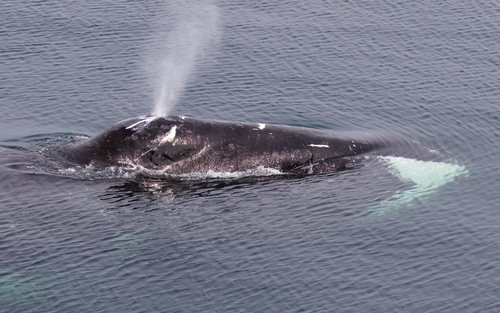
Bowhead Whale
Balaena mysticetus, or the Bowhead Whale, is an Arctic giant known for its immense size and impressive ice-breaking abilities. Living over 200 years, these whales play a critical role in the marine ecosystem, showcasing a remarkable adaptation to the frozen world they inhabit.
200 years
Lifespan
68038.9 - 90718.5 kg
Weight
Length: 15.24 - 18.29 m
Size
6.2 mph
Top Speed
Least Concern
Conservation Status
Increasing
Population Trend
Characteristics
The Bowhead Whale, known scientifically as Balaena mysticetus, thrives in the Arctic and sub-Arctic regions. These whales are notable for their massive size, reaching up to 60 feet, and their distinctive bow-shaped head. They possess a unique ability to break through thick sea ice and have the longest lifespan of any mammal, living over 200 years.
Distribution Range of the Bowhead Whale
The Balaena mysticetus, commonly known as the Bowhead Whale, is native to the Arctic and sub-Arctic regions. Its geographical distribution includes areas such as the Bering, Beaufort, and Chukchi Seas, as well as the waters surrounding Greenland, the Canadian Arctic Archipelago, and the Russian Arctic territories.
Bowhead Whale's Habitat
Environmental Conditions
Bowhead Whales inhabit cold, polar waters characterized by thick sea ice cover and low temperatures. They are commonly found in regions with seasonally shifting ice edges, where they follow the retreat and advance of the ice. The Bowhead Whale is adapted to survive in extreme cold, with a thick layer of blubber providing insulation.
Ecological Niche
Bowhead Whales occupy a unique ecological niche as filter feeders, primarily consuming zooplankton, such as copepods and krill. They are well-adapted to life in icy waters, using their massive heads to break through sea ice to breathe. The species plays a crucial role in the Arctic marine ecosystem, influencing the distribution and abundance of their prey species.
Copyright @ Nature Style Limited. All Rights Reserved.
 English
English